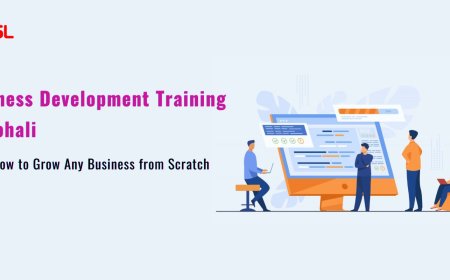From Storytime to Playtime Mollie Nelson’s Interactive Approach to Reading
Explore how ambition drives betrayal and tests loyalty in the relentless pursuit of personal power. Discover the moral complexities behind every power play.

In todays world of screens and fast-paced entertainment, capturing a childs attentionand holding itis no small feat. Yet, author and illustrator Mollie Nelson has found a delightful and meaningful way to do just that. Her approach to childrens literature transforms reading from a passive activity into an engaging, interactive experience. Through rhythmic language, lively illustrations, and movement-inspiring narratives, Nelson's books, especially her standout Wompus Stompus, redefine how children connect with stories. A Unique Blend of Storytelling and Play
Mollie Nelson didnt set out to write traditional children's books. Instead, she envisioned stories that did more than sit on a shelf. Her goal was to create books that movedbooks that kids could feel in their feet, clap in their hands, and echo with their voices.
Heart Behind the Stories
At the heart of Nelsons writing is a deep respect for childhood wonder. Her characters often find themselves in situations that mirror the imaginative adventures children create during playriding a dinosaur to the moon or orchestrating a musical zoo parade. These whimsical scenarios feel fresh yet familiar, tapping into the inner world of a child while introducing them to language patterns, rhymes, and narrative flow.
Nelsons background in early childhood education further strengthens the educational value of her books. With an understanding of developmental milestones, she crafts stories that support cognitive and language growth, coordination, and social-emotional development. This blend of entertainment and education is exactly why parents and educators turn to her books.
Magic of Movement-Based Reading
One of the most engaging aspects of Mollie Nelsons interactive reading style is her use of movement. This is more than just jumping around; its a carefully constructed tool to support literacy. When children move along with a story, they not only retain more of the content but also connect more deeply with the narrative.
Movement activates the brain in unique ways. Research shows that kinesthetic learninglearning by doingcan significantly boost comprehension and memory. Nelsons books utilize this approach by prompting actions like wiggle your toes, hop like a frog, or spin like a top at key story points. These cues are not distractions; theyre literacy tools, helping children link action with language, rhythm with memory, and story with self-expression.
Rhythmic Romp
Among her growing collection of titles, one book that truly encapsulates Mollie Nelsons philosophy is Wompus Stompus. This rhythmic masterpiece draws children into a fun, noisy, stomping adventure. With bouncing rhymes, silly sounds, and colorful illustrations, it encourages kids to get up and move while exploring the sounds of language.
Its not just the stomping that grabs attention. Nelson masterfully layers repetition and rhyme to build phonemic awarenessa crucial pre-reading skill. Children anticipate what comes next, shout out, repeat phrases, and begin to identify patterns in sound. All of this happens while theyre pretending to be wompuses on a wild romp.
In many homes and classrooms, the Wompus Stompus rhythmic book for kids has become a go-to favorite for read-aloud time. Its blend of rhythm, motion, and humor makes it ideal for group reading and solo giggle-fests alike. More than just a book, it serves as a playful tool for educators seeking to spark language development and body awareness simultaneously.
Interactive Reading in Practice
So, how do Nelsons books play out in the real world? Teachers often use them during circle time or as part of music and movement sessions. One early childhood educator noted, Mollies stories turn even the most restless kids into active listeners. By the time we finish a book, everyones had a great time and picked up a new word or two.
Parents, too, rave about how the books hold their children's attention. Many report that after a single read-through, their kids are reciting the lines or turning everyday play into scenes from the books. This kind of interactionspontaneous, joyful, and rooted in storyis exactly what Nelson hopes to inspire.
Inspiring Creativity
Mollie Nelsons interactive storytelling doesnt end with the final page. Her books often lead children to create their own stories, movements, and even songs. Inspired by the rhythm and repetition, kids naturally begin experimenting with languagerhyming their names, mimicking sounds, and acting out scenes.
This post-reading creativity is where Nelsons influence truly shines. She doesnt just entertain; she empowers children to become storytellers themselves. By removing the boundary between reader and participant, she permits kids to explore their voices.
Parents have shared stories of their children choreographing their own Wompus Stompus dance routines or building cardboard costumes to reenact scenes. These moments of extended play are more than adorabletheyre vital for imaginative development and emotional expression.
Lasting Impact of Interactive Books
In an age where so much learning happens through screens, Mollie Nelson offers a refreshing return to the tactile, physical, and deeply human aspects of storytelling. Her books do more than tell storiesthey create experiences. Children arent just sitting and listening; theyre clapping, stomping, shouting, giggling, and imagining.
This interactive approach builds confidence. Children who might shy away from traditional reading sessions often feel more comfortable when movement is involved. The energy becomes a bridge that connects them to language, allowing them to express themselves in a way that feels natural and fun.
Conclusion
Mollie Nelsons books are much more than picture books; theyre invitations to move, to laugh, and to grow. Through rhythm, repetition, and an irresistible sense of fun, she has created a new standard for what childrens literature can be. Her interactive style turns ordinary moments into learning opportunities, playtime into reading time, and stories into unforgettable experiences.





































